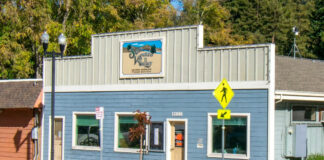In California we are grateful for rain, but if we have to drive during an El Nino downpour, we may not be so pleased with the high intensity of water brought by the storm system. Menacing heavy rains and winds create driving conditions that can increase the opportunities for accidents to occur.
Cynthia Harris, AAA Northern California spokesperson reports that, “The El Nino storm system has arrived and brought its expected heavier-than-usual rains to Northern California. With slippery roads ahead, we can expect to have a higher number of weather-related crashes, deaths and injuries.” She said, “The combination of poorly maintained vehicles and driver error, along with loss of visibility and slick roads, cause thousands of preventable crashes each year.”
If you are accustomed to driving on the Santa CruzMountain roadways, as many of us are, then you probably have developed the driving skills to handle the curves and changes in altitudes characteristic of our roads. You can probably predict every little bump in the road and each curve before you approach it. In fair weather, you may even drive just a little bit faster than allowed because you have confidence in your driving skills. However, add the severe weather conditions brought on by El Nino storms, and the otherwise friendly roads may provide a driving nightmare for both you and other drivers sharing the road.
On the East Coast, people winterize their cars as a first step of preparing for safe winter driving. However, on the West Coast along the CaliforniaCentralCoast during drought conditions, many people may equate the habit of winterizing their cars to verifying that their windshield wipers still work.
A plan to winterize cars could improve your chance of avoiding accidents during an El Nino storm. Such a plan could as simple as this: Check your vehicle’s brakes, heater, tires, defroster and lights to make sure they are in good working order.
It is important to inspect your vehicle’s tires for the condition of their tread and pressure. Good tread allows the water to escape from under the tires and increases traction. If your tire pressure is too low, then tread can squeeze together which reduces traction. Too-high pressure prevents the tread from contacting the road thoroughly.
Keep a full gas tank in case weather conditions cause dangerous road conditions such as mud slides or downed trees. You may need to change routes, or idle for long periods of time, or turn around in a storm. A full gas tank allows you to do these maneuvers without worrying about running out of fuel.
Carry an emergency kit and make sure your road service insurance card is handy. Items to include in the kit are a flashlight, batteries, first-aid kit, flares or emergency triangles, window washer fluid, tool kit, blanket or sleeping bag, gloves, paper towels, drinking water, and extra food. Also include abrasive material such as sand, salt or non-clumping cat litter, and a small shovel to free the vehicle if it becomes stuck.
After winterizing your car, consider how you can adopt safer winter-driving skills. Adjust your speed for the weather. Slow down and keep in mind that your vehicle needs at least three times more distance to stop on slick roads. Increase your following distance. To safely stop, a vehicle needs a minimum of four to eight seconds between it and the vehicle in front.
Learn to take evasive action by steering around a situation to avoid collisions. Steering is preferred to braking at speeds above 25 mph because less distance is required to steer around an object than to brake to a stop. In winter weather, sudden braking often leads to skids.
Even a small amount of water on the road can cause a vehicle to hydroplane. One-twelfth of an inch of water between your tires and the road means each tire has to displace one gallon of water a second. To reduce the chances of hydroplaning, slow down, avoid hard braking or sharp turns, drive in the tracks of the vehicle ahead of you, and increase your following distance.
If your car does break down and you are in trouble, pull completely off to the side of the road, turn on the hazard lights, light flares or place emergency triangles and signal for help. Call for help on a cell phone.












